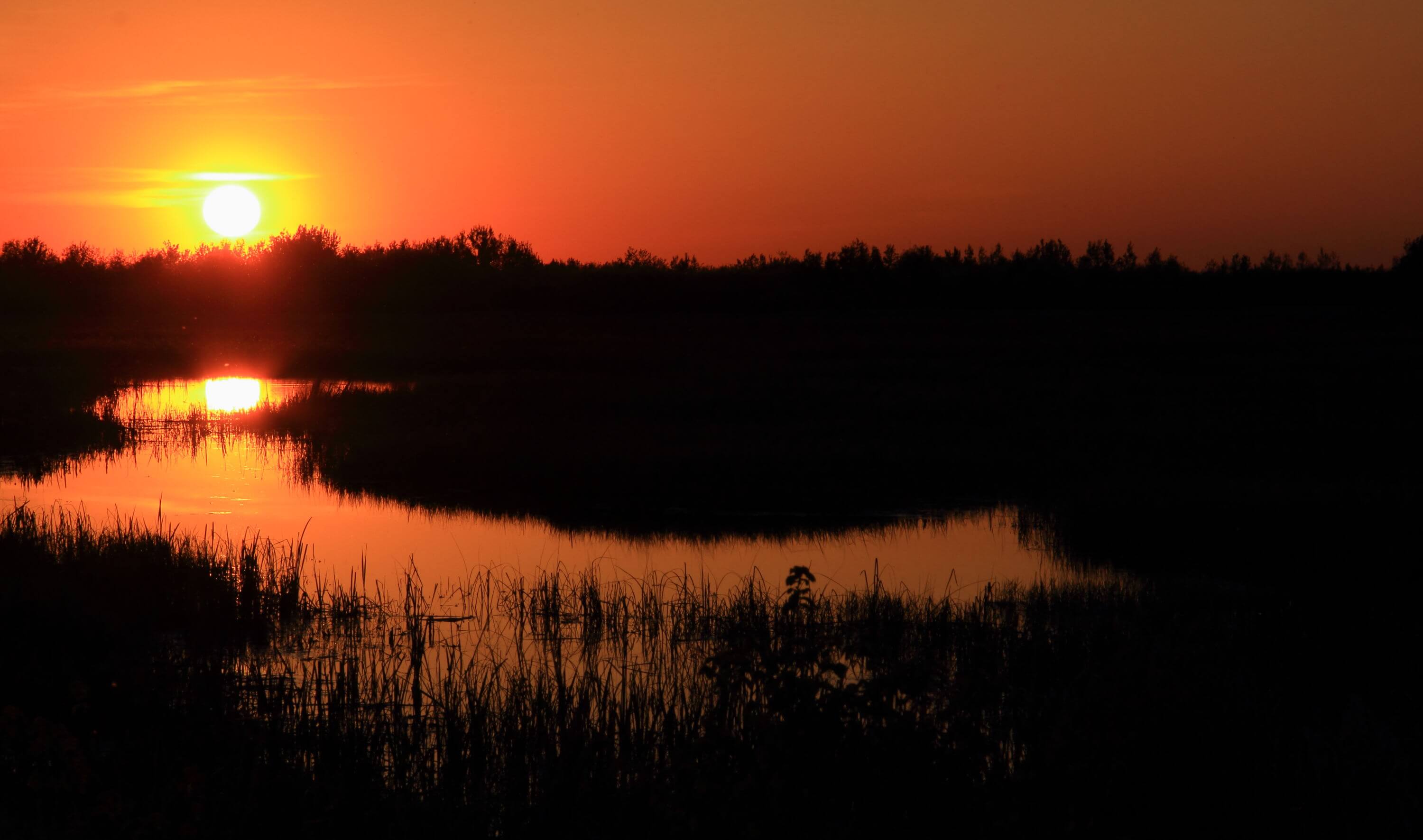In Wisconsin, Reminders of the Past
By Bruce Beehler
June 3, 2015 Blog #19 of my North with the Spring journey:
In the southwestern corner of Wisconsin, where the Wisconsin River meets the Mississippi, there are a series of high bluffs that hem in these two great rivers. The bluff south of the Wisconsin is called Wyalusing, and is home to a superb state park. I camped there for four nights, and biked and birded the park and adjacent natural areas in both Wisconsin and neighboring Iowa.

A Grasshopper Sparrow in Wisconsin. Photo by Bruce Beehler
I found lovely oak forests and deciduous bottomlands near the confluence of the rivers. A male Cerulean Warbler serenaded me from just over my tent site morning and afternoon. American Redstarts played around every patch of woodland, often foraging nearly to ground level in pairs. Henslow's Sparrows gave their asthmatic call from a large grassland patch near the center of the park. And Bell's Vireo sang its crazy song from a row of trees in an open oak glade. Dozens of northward-traveling Tennessee and Blackpoll Warblers enlivened the canopy oak trees.
Ancient Mounds
This part of the Mississippi is famous for its American Indian Mounds. These are ancient mounds that Native Americans built for funerary or ceremonial purposes. There are several thousand mounds scattered across much of the East, but the Mississippi mounds are the most famous, perhaps because some of them are formed in the shape of animals.

Migrant birds like American Redstart filled the woodlands of Effigy Mounds National Monument, in Iowa. Photo by Greg Lavaty
I visited Effigy Mounds National Monument just across the River in Iowa on my first afternoon here. Over the centuries, the forest has grown up around these mounds, so I experienced the best of these remarkable historical features in a woodland setting. I was particularly moved by the mounds shaped like bears. The area also was filled with migrant birds—especially Rose-breasted Grosbeaks and American Redstarts.
Once Forest, Now Prairie
A birder from North Dakota whom I met in Wyalusing State Park mentioned that I should visit Crex Meadows, near Grantsburg, Wisc., in the far northwest part of the state. Crex Meadows Wildlife Area is an amazing natural site of 30,000 acres that has been heavily managed to bring it back to what is thought to be its primeval prairie state.

At Crex Meadows, fire and mechanical means have transformed closed-canopy deciduous forest into prairie. Photo by Bruce Beehler
There is no conservation area on my travels that has received smarter management than Crex Meadows. The result is positive: Sandhill Crane pairs were scattered all through the marsh and prairie setting. I found Trumpeter Swans, Whip-poor-will, Common Raven, Sedge Wren (pictured, top), Alder Flycatcher, Clay-colored Sparrow, and Mourning Warbler.

Crex Meadows is home to many nesting pairs of Sandhill Cranes each summer. Photo by Bruce Beehler
Several wolf packs inhabit this part of Wisconsin, and I saw tracks in the soft sand. This vast open mix of prairie and marshland is a wonderful reminder of the way things used to be, before the long period of fire-suppression and the dominant regeneration of former prairie into deciduous forest.

Trumpeter Swans at Crex Meadows. Photo by Bruce Beehler
The Far Northeast
Looking at a map of Wisconsin, I decided to head to an area with hundreds of small lakes in the state's far northeast, near the border with the upper peninsula of Michigan. Known locally as the Northern Highlands, this area had an abundance of balsam fir, white and black spruce, and tamarack, as well as sphagnum bogs. It reminded me of the northern Adirondacks.
The highlands also featured Yellow-bellied Sapsuckers, giving their cadenced drum; Ovenbirds; Mourning and Nashville Warblers; Hermit Thrushes; and Lincoln's Sparrows. Now I was in the far north—the southern edge of the Great North Woods! From here, I plan to head west into Minnesota, my last stop before heading into the wilds of Canada.
 Bruce Beehler is an ornithologist, conservationist, and naturalist. He is currently a Research Associate in the Division of Birds at the National Museum of Natural History, Smithsonian Institution, and is focused on research and writing about nature and natural history. Bruce has published ten books and authored dozens of technical and popular articles about nature. In 2007, Beehler was featured in a “60 Minutes” piece highlighting an expedition he led to the Foja Mountains in the interior of New Guinea in which scores of new species were discovered.
Bruce Beehler is an ornithologist, conservationist, and naturalist. He is currently a Research Associate in the Division of Birds at the National Museum of Natural History, Smithsonian Institution, and is focused on research and writing about nature and natural history. Bruce has published ten books and authored dozens of technical and popular articles about nature. In 2007, Beehler was featured in a “60 Minutes” piece highlighting an expedition he led to the Foja Mountains in the interior of New Guinea in which scores of new species were discovered.
The North with the Spring journey is supported by American Bird Conservancy and Georgia-Pacific.


















































